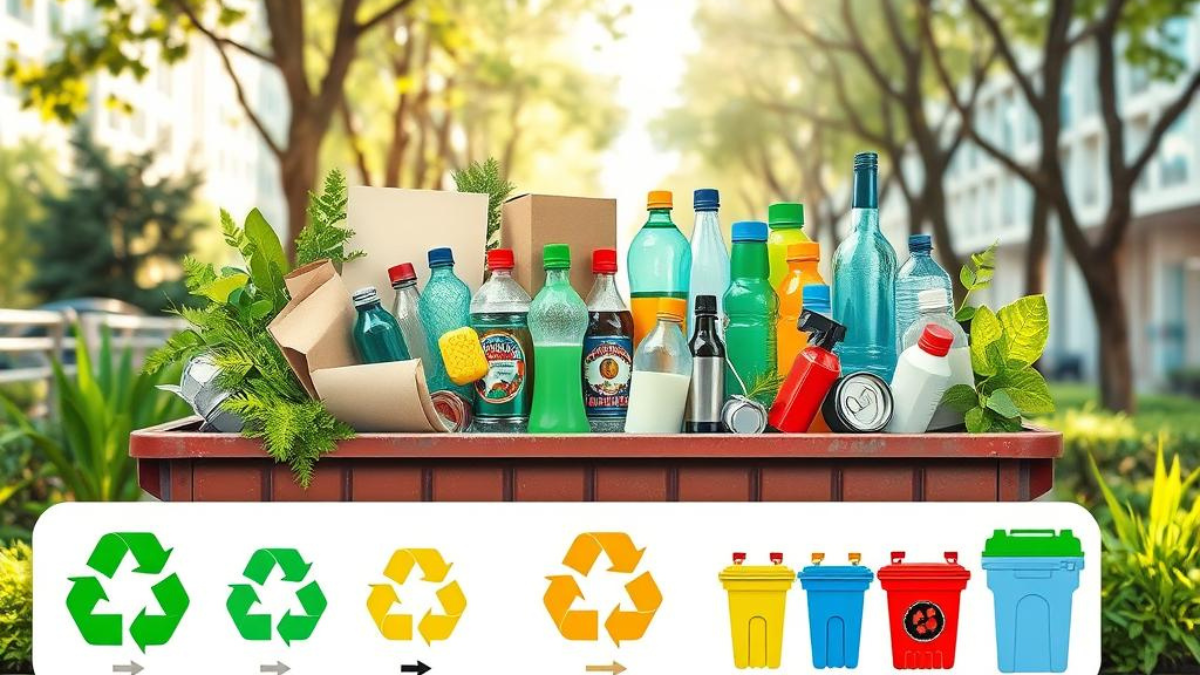Recycling has become a cornerstone of environmental responsibility. However, many people still feel confused about the different types of recycling systems. One method that’s gaining popularity across communities is dry mixed recycling.
This approach simplifies the recycling process for households and businesses alike. Moreover, it offers significant environmental benefits when done correctly. In this guide, you’ll discover everything you need to know, from what materials belong in your bin to how this system helps protect our planet.
Understanding Dry Mixed Recycling
This collection system allows various recyclable materials to be placed together in one container. Unlike traditional recycling methods that require sorting materials into separate bins, it lets you combine paper, cardboard, plastic bottles, and metal cans in a single recycling bin.
The term “dry” refers to the fact that these materials should be clean and free from food waste or liquids. Items like dirty pizza boxes or containers with leftover food do not belong in the bin.
Most recycling facilities use advanced sorting technology to separate these materials later. However, the success of this system depends heavily on what you put in your bin at home.
What Materials Belong in Dry Mixed Recycling
Understanding which items are acceptable is crucial for effective dry mixed recycling. The following materials are typically welcome in most programs:
Paper Products
Newspapers, magazines, and office paper are excellent candidates for dry mixed recycling. Additionally, junk mail, catalogs, and telephone directories can go in your bin. Clean cardboard boxes and cereal boxes also belong here.
Furthermore, paper egg cartons and paper towel tubes are acceptable. However, make sure these items are clean and dry before disposal.
Plastic Containers
Most plastic bottles and containers marked with recycling codes 1 through 7 work well in dry mixed recycling. For example, water bottles, soda bottles, and milk jugs are perfect candidates.
Yogurt containers, margarine tubs, and detergent bottles also belong in this category. Nevertheless, always rinse these containers before placing them in your recycling bin.
Metal Items
Aluminium cans from beverages are among the most valuable recyclable items. Steel food cans, including those for soup and vegetables, are equally welcome.
Empty aerosol cans can also go in your bin, provided they’re empty. However, avoid including anything with hazardous materials or sharp edges.
Items That Don’t Belong
Certain materials can contaminate dry mixed recycling and cause problems at processing facilities. Therefore, it’s essential to know what to avoid.
Food Waste and Organic Materials
Any food scraps or organic waste should never enter dry mixed recycling bins. These materials can attract pests and create unpleasant odors. Moreover, they can contaminate other recyclable materials.
Garden waste, including grass clippings and leaves, belongs in separate organic waste collections. Additionally, pet waste should go in regular household trash.
Contaminated Materials
Pizza boxes with grease stains cannot be recycled through dry mixed recycling. Similarly, paper towels and napkins used for cleaning are too contaminated.
Disposable diapers and feminine hygiene products also don’t belong here. Furthermore, tissues and paper plates with food residue should go in regular trash.
Electronic and Hazardous Waste
Electronics require special handling and shouldn’t go in bins. Items like computers, phones, and batteries need specialized recycling programs.
Paint cans, motor oil containers, and cleaning chemical bottles are hazardous materials. Therefore, these items require special disposal methods at designated facilities.
The Environmental Benefits
Dry mixed recycling offers numerous environmental advantages that make it worth the effort. These benefits extend far beyond simply reducing landfill waste.
Reducing Greenhouse Gas Emissions
When materials undergo dry mixed recycling instead of going to landfills, they don’t produce methane gas. This greenhouse gas is significantly more potent than carbon dioxide. Therefore, recycling helps combat climate change.
Manufacturing products from recycled materials typically requires less energy than creating items from raw materials. Consequently, this process reduces overall carbon emissions from industrial activities.
Conserving Natural Resources
Recycling paper through dry mixed recycling programs helps preserve forests and reduces water consumption. Additionally, recycling metals means fewer mining operations are necessary.
Plastic recycling conserves petroleum resources that would otherwise be used to create new plastic products. Furthermore, this conservation helps protect ecosystems from extraction activities.
Creating Economic Opportunities
The dry mixed recycling industry creates jobs in collection, processing, and manufacturing sectors. These positions range from truck drivers to facility operators to research scientists.
Moreover, recycled materials often cost less than virgin materials for manufacturers. This cost savings can translate to lower prices for consumers on many products.
Best Practices for Success
Following proper procedures ensures your efforts achieve maximum impact. These simple steps make a significant difference in program effectiveness.
Clean Your Materials
Rinse containers to remove food residue before placing them in your dry mixed recycling bin. However, you don’t need to scrub them until they’re spotless. A quick rinse usually suffices.
Empty containers completely and remove lids when instructed by your local program. Additionally, remove any plastic bags or wrapping materials that might be attached.
Check Local Guidelines
Different communities have varying rules for their dry mixed recycling programs. Therefore, contact your waste management company or local government for specific guidelines.
Some programs accept glass containers while others don’t. Similarly, certain plastic types might not be welcome in your area’s dry mixed recycling system.
Avoid Wishcycling
“Wishcycling” occurs when people put non-recyclable items in recycling bins hoping they’ll somehow get recycled. Unfortunately, this practice often contaminates entire batches of recyclable materials.
When in doubt, throw it out rather than risk contaminating dry mixed recycling. Additionally, many communities offer resources to help residents identify acceptable materials.
Making It Part of Your Routine
Incorporating it into your daily routine becomes easier with practice. Start by placing recycling bins in convenient locations throughout your home.
Keep a small container near your kitchen sink for rinsing recyclable containers. Furthermore, educate family members about which materials belong in your dry mixed recycling bin.
Consider setting up a simple sorting system that works for your household. However, remember that the goal is making recycling easy and consistent rather than perfect.
Conclusion
Recycling represents a practical approach to environmental stewardship that anyone can master. By understanding which materials belong in your bin and following simple preparation steps, you contribute to significant environmental benefits.
The success of these programs depends on community participation and proper material preparation. Therefore, take time to learn your local program’s specific requirements and share this knowledge with others.
Start today by examining your household waste and identifying items suitable for your recycling bin. Every properly recycled bottle, can, and piece of paper makes a difference in building a more sustainable future for everyone.







